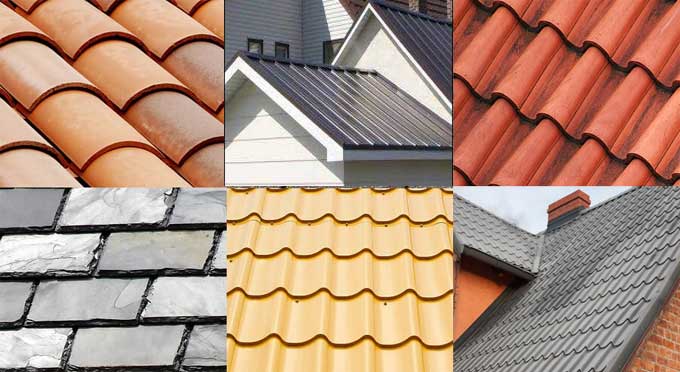
Types of Roofing: Which One is the Best for Your Climate?

It's more important than you think to choose the right roofing material for your home. You need to protect your house from natural disasters based on the climate where you live. Your roof can become damaged by snow and ice if you live in a cold climate.
The roof of your home should not absorb all the heat and transfer it inside if it is in a hot climate. Various roofing materials are beneficial for various environments due to these reasons and others. The right choice means no roof damage or unexpected maintenance.
Types of Roofing
Asphalt Shingles
Many nations across the developed world use asphalt shingles as their most popular roof option due to their many advantages. Proper care and maintenance will allow them to last for 25 years or more. The grade ranges from thin to thick to strong.
It's best to choose heavy-duty varieties in areas with high winds and frequent storms. As long as algaecides are applied, they can withstand high humidity levels. Additionally, they can draw heat into the room, making them great for cooler areas.
Wood Shingles & Shakes
If you live in a colder area, wood shingles and shakes may recommend. Some sources claim that these materials can provide two times more insulation than asphalt shingles. Additionally, their weight and thickness make them resistant to wind, rain, and hail. For areas with high humidity, wood roofs aren't a good option because of the constant exposure to moisture that can cause them to mold and split.
Clay Roofing
A beautiful, rustic look can achieve with clay tiles. There are many styles and colors of clay tiles. Hot, humid, and tropical climates are common places to find this type of roofing. Clay tiles are not only attractive but are also ideally suited to the harsh climate found in these regions. Clay tiles reflect light and are weatherproof. There used to be a lot of this kind of roofing in parts of India and other southeast countries before RCC slabs started replacing them.
Metal Roofing
Recent years have seen a rise in its popularity because of its durability and eco-friendliness. Additionally, metal has become increasingly popular. The cost of this roofing material is higher than asphalt shingles, but it lasts far longer. It can last up to 75 years in some cases.
In areas prone to winter storms, metal roofing works well because of its ability to shed snow and ice. In addition, it does not absorb moisture and reflects heat, making it ideal for hot, humid climates. Metal roofing can reduce the temperature of your home because it reflects solar heat.
Concrete Roofing
Concrete is an inexpensive, heat-resistant, fire-resistant, and durable building material, but it can be heavy at times. Despite its heat resistance, this roof is perfect for hot climates. You can mimic other roofing styles using concrete tiles. Despite tile roofs' weight and framing requirements, they are beautiful and durable. In many climates, tiles are a viable option due to their resistance to fire and insects. You can also control your home's temperature by installing light-colored tile.
Slate Roofing
The market for shingles today offers both natural and synthetic slates. Real slates are Lifetime roofs because they last for centuries. Slate is a durable and low-maintenance roof. Due to its durability and low manufacturing impact, slate is also considered a green option.
Rubber Roofing
Rubber is probably not the first thing that homeowners think of when considering roofing materials. Though its efficiency, resiliency, and affordability make it a popular choice, the system is still relatively new. Clay, slate, and wood can all replicate with rubber roofing. Whether you live in the summer or winter, rubber roofs can handle the weather.
To learn more, watch the following video tutorial.
Video Source: The Home Depot
Final Thoughts
Roofing materials must differ according to the climate. You need to take into account the temperature, snow, and rain, as well as hurricanes, tornadoes, and other natural disasters. Heat-resistant materials reflect sun rays to keep your home cool, while others hold up to excessive heat better.
The addition of these materials will make them more resistant to hurricanes or fluctuating temperatures throughout the year.


